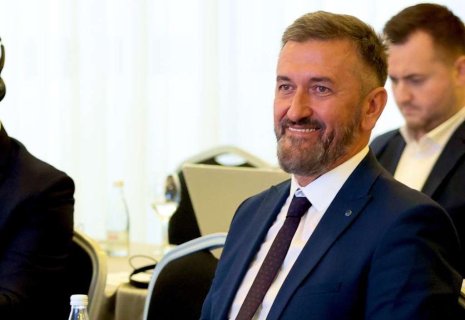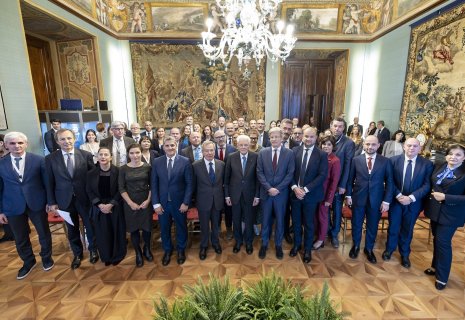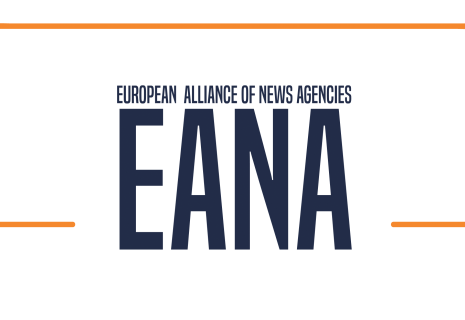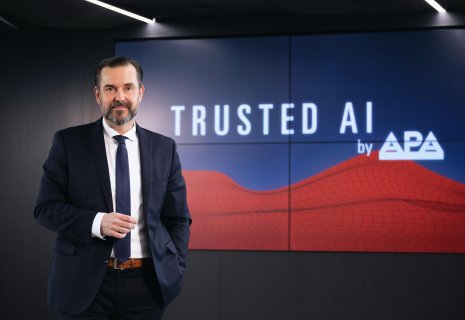
Exploring space together - Slovenia full ESA Member
Marcos Bavdaz is Head of the Technology Preparation Section in the Science Directorate of the European Space Agency (ESA). Located at the European Space research and Technology Center (ESTEC) in Noordwijk, The Netherlands, he is responsible for the timely development of novel technologies required for future science missions. He received his PhD from the Technical University of Vienna in 1988 and is a Senior Advisor to ESA for high energy optics. In an op-ed for The Slovenia Times, he says that Slovenia's accession to the European Space Agency provides an excellent opportunity for businesses and researchers alike.
The large group of students in Ljubljana was enthusiastic and interested in space when I was presenting the new book Noordung.doc. I explained the work Herman Potočnik published in his 1928 book The Problem of Space Travel, his rotating space station, his thoughts on Earth observation, telecommunication and zero gravity, and illustrated what we are doing today at the European Space Agency (ESA), CE Report quotes The Slovenia Times.
I continued and elaborated the importance of international collaboration to overcome the challenges of space travel and gave the example of ESA, which was created half a century ago to achieve things individual European countries could not undertake. Over the past decades, ESA has implemented an own navigation system (Galileo), established an independent access to space (Ariane and Vega launchers) and is operating cutting edge Earth observation satellites which are helping us predict the weather and optimise our agriculture.
I wondered, if some of these keen young people would later be working on a space-related venture.
Today, 1st of January 2025, Slovenia became the 23rd Member State of ESA, opening doors to the full participation of Slovenian engineers, scientists, enterprises and institutions to ESA space projects and programmes. Slovenian talent and creativity will have access and contribute to exciting ESA missions, in which Europeans jointly evolve the peaceful use of space for the benefit of its people. In ESA new ideas and novel technologies are being developed in a multinational team effort, which will now include Slovenia, delivering a better understanding of our world.
As Full Member, Slovenia today also enters the ESA Science programme, the directorate in which I work. We are developing and operating highly visible missions to other planets and space telescopes to study the nature and history of the Universe. ESA's heritage in space science is world-class: mankind's most distant landing was done by Europe, putting the Huygens probe onto the Saturnian moon Titan. The Planck mission produced the best image of the Universe when it was a mere 400 thousand years old. Europe was the first to land on a comet (Rosetta), and ESA spacecraft are travelling to the planets Mercury (BepiColombo) and Jupiter (Juice). ESA space observatories are highly competitive and are producing a trove of data about stars (Gaia), galaxies, exo-planets (Cheops) and dark matter (Euclid), leading to ground-breaking scientific insights and publications.
These science missions require industrial collaboration across disciplines; they rely on technological innovation and creative solutions. The investments made lead to improved competitiveness of the companies and institutions involved, and often find applications in products used in our daily lives. The investments into ESA have a high socioeconomic impact and a positive financial return for each of the countries involved.
ESA's convention ensures that the investments of the Member States are returned to the national economies, in the form of industrial contracts preparing the technologies and building the missions. This geo-return policy makes it very attractive for Member States to subscribe to the ESA Programmes, where they can set their priorities and develop their interests. Slovenia prepared well for the accession to ESA as Full Member and elaborated its space strategy, considering the national needs and fostering the capabilities of its industry. More work will however be required to identify the areas and niches, where Slovenian experts and entities can be most productive and competitive.
One of my professional responsibilities is to identify the critical technologies which will be required to make future ESA science missions possible. With my team we elaborate technology workplans and implement industrial activities to create these technologies. Finally, we can also consider Slovenian entities and involve Slovenian talent.
ESA science missions are technology drivers and require a significant level of innovation to excel over preceding missions. An example is the primary mirror of the Herschel infrared telescope, which still is the largest monolithic telescope in space. New industrial facilities had to be created to make the ultra-lightweight, but extremely stiff and stable primary mirror using a special ceramic material, silicon carbide. This technology later enabled the astrometry mission Gaia, currently one of the scientifically most productive space missions ever. It can measure star positions to unprecedented accuracy, equivalent to resolving the diameter of a coin on the moon. Due to this technology, Gaia was able to discover hundreds of comets, thousands of asteroids, and hundreds of black holes, next to measuring the proper motion of a billion stars of our own galaxy.
Slovenia will contribute to the future ESA science missions now in preparation, including the flagship observatory NewAthena, an X-ray telescope complementing the other great observatories currently being built on Earth. Slovenian contributions will likely fly to Saturn and land on its moon Enceladus to study ice-volcanos and search for signs of life. I am confident that the accession of Slovenia as Full Member of ESA will provide great opportunities for many young people to be part of these endeavours.
Slovenia, welcome to ESA!























